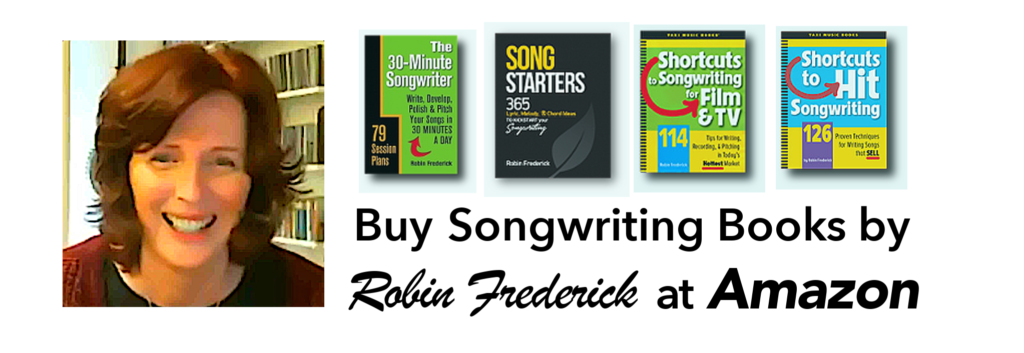An “Original” is a person living an authentic, creative life, one whose work expresses truth and emotion in a way that speaks to others. While a rebel breaks the rules, an Original bends them, plays with them, twists them around and reshapes them until the results are surprisingly unique and fresh.
To be an Original you need to know what the rules are first, then you can select which ones to play with and what you want to do with them. It’s kind of like having the coolest Lego set ever. Once you know what’s in the box and how it fits together, you can build something special and uniquely your own.
If I use song craft won’t I end up being UN-original?
No, you won’t be un-original because, even though you’re working with the same set of song crafting techniques as other songwriters, you’re going to use them in your own way.
Think of it like this: Shakespeare was undeniably original, but he followed the same rules of poetry and play writing as everyone else. In other words, he was playing with the same “Lego set” as the rest of us. It’s what you do with what you’ve got that counts.
Here are a few thoughts on writing authentically while using song craft.
So let’s PLAY WITH OUR LEGOs.

No matter what level of songwriting you’re at, you can start playing with your songwriter’s Lego set right now. Here’s a list of ten song craft techniques you’re probably familiar with, followed by some suggestions for totally messing with them. Try a couple and see where they take you. I’ve included examples of successful songs so you can hear how it worked out for someone else.
There’s no need to write finished songs; this is just for the fun. But, of course, if you do happen to get something going that you like, by all means finish it. And don’t be afraid to bend a few more rules along the way.
Song craft technique #1 (Melody)
=> Increase the energy in your chorus by putting it in a higher note range than the verse.
Play with it: Write a verse and chorus melody or rewrite an old one. Put your chorus in a lower note range than your verse. What kind of lyric does the lower chorus melody suggest? What emotion?
Examples are “You’re So Vain” by Carly Simon and “Maps” by Maroon 5 which has a pre-chorus and chorus in the same range, both are lower than the verse.
Or you can try putting both verse and chorus in the same note range. Create contrast by varying the rhythm or phrase lengths of the melody. Example: Dierks Bentley’s “Say You Do.” (See the song analysis below.) For an R&B example, check out “Truth Is” by Fantasia.
Song craft technique #2 (Rhyming)
=> Use rhymes to add memorability and structure to your song lyric.
Play with it: Write a lyric that doesn’t rhyme. You might start by writing phrases that describe an emotion, a person, a conversation, or situation. Keep it conversational. You can add a melody afterwards or write to an existing hit song melody.
Don’t make an effort to rhyme any lines, just write what you feel. If a rhyme occurs by accident or in an unusual place, it’s okay to keep it. You’ll hear a few of those in the following non-rhyming songs: “America” by SImon & Garfunkel, “Tom’s Diner” by Suzanne Vega, “Demons” by Guster.
It’s hard NOT to rhyme. Some of the songs I just mentioned accidentally rhyme, even though the writers obviously didn’t intend to.
Song craft technique #3 (Lyrics
=> Use images and phrases that express a single emotion.
Play with it: List three or more images or phrases that you associate with a single emotion… like happiness. Rough out a verse or chorus lyric that expresses happiness using the words on your list. Then, list three or more images or phrases that you associate with a different emotion. Rewrite your happy lyric adding the words on the new list. What happens to the emotion in your lyric? How does the song feel now? Example: “I’m So Happy I Can’t Stop Crying” by Sting. (Also recorded as a duet by Sting and Toby Keith.)
Song craft technique #4 (Style)
=> Write your song in a single genre.
Play with it: Choose a song you’ve written or work up a rough verse and chorus in a genre you’re familiar with. Now, choose chords, rhythmic feel, melody, lyrics, or production – one or more of these – from a different style and blend the two into a song that works for you.
Among many recent hit song examples are “Grenade” by Bruno Mars (classic Motown with modern lyrics and production), “What Does the Fox Say” by Ylvis (EDM production and melody with novelty song lyrics), “You Should Be With Me” by Taylor Swift (Contemporary Country lyric with Pop melody), “Uptown Funk” by Mark Ronson feat. Bruno Mars (classic Funk riffs in today’s sampled and looped production style), “This Is How We Roll ” by Florida Georgia Line (Contemporary Country with Rap rhymes and phrasing).
Song craft technique #5 (Chords)
=> Use chords that support your song’s emotion. Feature major chords for happy songs, minor chords for sad songs.
Play with it: Write a heartbroken or downbeat lyric and sing it with a progression that starts on and emphasizes major chords, like this one – C, G, Dm, F – from the chorus of “Almost Lover” by A Fine Frenzy. For more of a challenge, add an upbeat rhythm groove. Examples to listen to are “Fall Hard” by Shout Out Louds, “Wonderful” by Everclear, and “We Are Young” by Fun.
Or try a chord progression that emphasizes minor chords and sing an upbeat lyric to it. Use a progression that starts on and features minor chords, like this one – Am, F, Dm, Am. Songs like these often come across as ironic or yearning because the music tells listeners what the singer is actually feeling. Check out the classic hit “I’m Not In Love” by 10CC to hear this. Take a look at the lyrics first and imagine an upbeat music track with it. It works. Then listen to the actual track of the hit song. The chords to the song’s verse are A, Am, G#m, G#, C#m – a mournful, descending line where major fades into minor.
Song craft technique #6 (Melody & Lyrics)
=> To create an interesting melody, use a mix of long and short melody and lyric phrases.
Play with it: Make all the lines in your verse or chorus the same length. You can keep them interesting by changing the lyrics or the chords underneath. You can also try starting on different beats while using the same melody line. Play around by bending this rule until you come up with something you like. Example: “How Far We’ve Come” by Matchbox Twenty is full of melodic repetition in both the verse and chorus.
Song craft technique #7 (Structure)
=> Today’s successful songs use a structure with a verse and chorus.
Play with it: Write a song that doesn’t have a chorus. Hint: Write a string of verses, then sing the second or third verse an octave higher. Examples: “Iris” by the Goo Goo Dolls, “If I Were a Boy” recorded by Beyonce, “Piano Man” by Billy Joel.
Song craft technique #8 (Chords)
=> To add contrast between sections, change the chord progression.
Play with it: Okay, you can be an original by using the same chord progression throughout your entire song. Actually, a lot of today’s biggest hit songs do it, so maybe you won’t be a totally original. You’ll need to use the melody to keep the chord progression interesting by changing the note range between sections, or changing from a choppy verse melody to a smooth one in the chorus. Just be sure the chords and chord progression remain the same.
This is a real rule-busting challenge yet it’s being done in many of today’s most successful songs. Examples: “Stronger (What Doesn’t Kill You)” recorded by Kelly Clarkson, “Counting Stars” or “Apologize” by OneRepublic, “Halo” by Beyonce.
You can find karaoke tracks without background vocals for these example songs at a website like www.Karaoke-Version.com. For practice, try writing an original song to the track.
Song craft technique #9 (Lyrics)
=> Avoid clichés!
Play with it: Be an Original by choosing using clichés BUT twist them around to make them sound fresh. Play with the wording or try a different angle to make listeners hear the phrase in a new way. Examples: “A Hard Day’s Night” by the Beatles, “Another One Bites the Dust” by Queen, “Friends in Low Places” a hit for Garth Brooks, “That’s What Friends Are For” sung by Dionne Warwick (and friends), “You’re Gonna Miss This,” a hit for Trace Adkins, ‘Won’t Get Fooled Again” by The Who.
Song craft technique #10
=> Choose any shortcut in one of my books and mess around with it.

These are just a few ideas for twisting, tweaking, bending and breaking the song craft “rules.” The truth is, there are no rules, only techniques that work for listeners. Play with the building blocks in your song craft LEGO set, fit things together in new ways and see what happens. Practice, Grasshopper, and soon you will become … a Master.
by Robin Frederick

